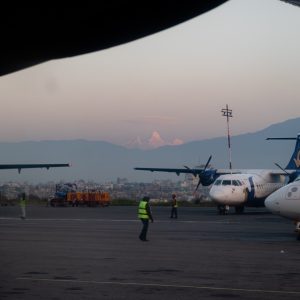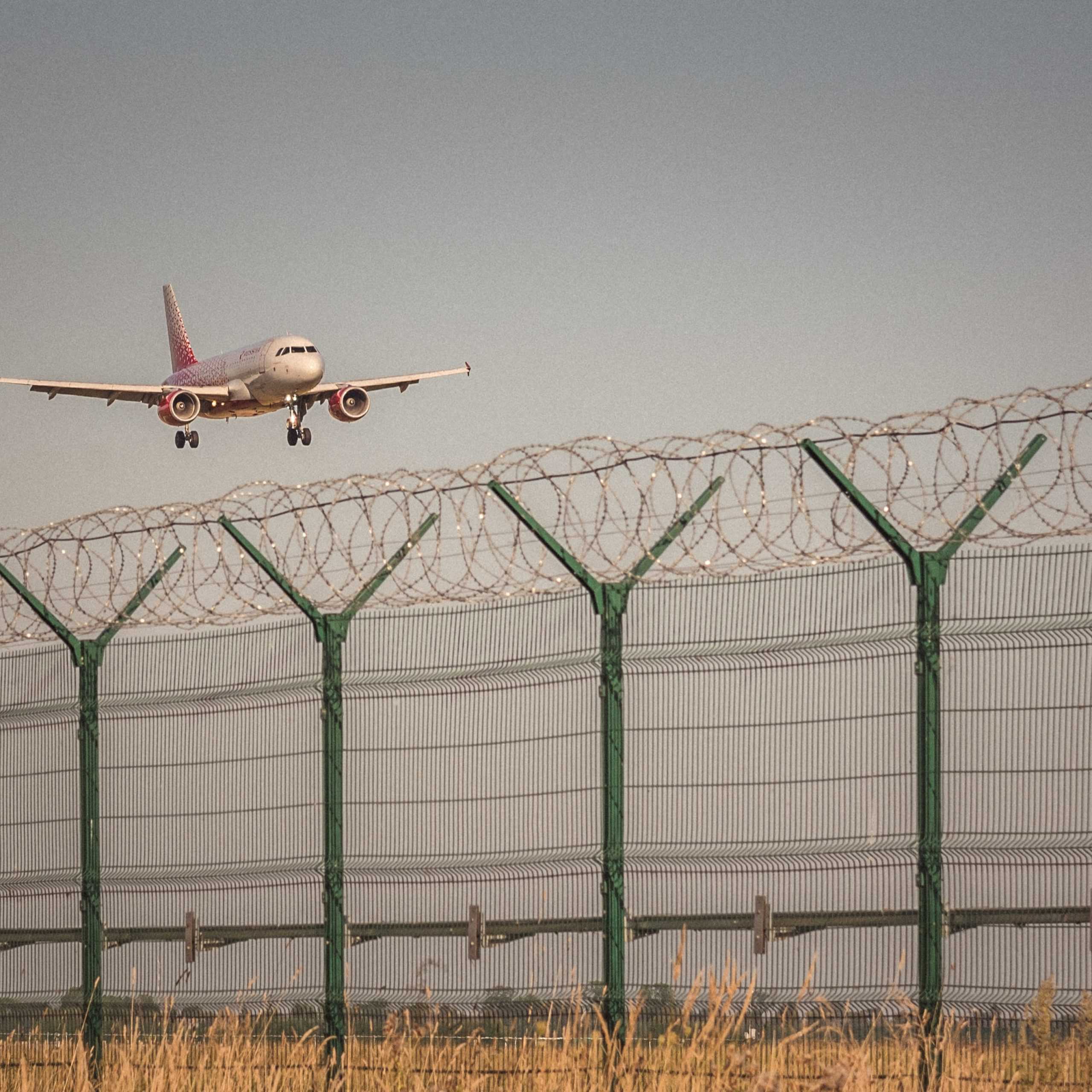Introduction:
Nepal, nestled in the heart of the Himalayas, is a country of unparalleled natural beauty and cultural diversity. Its international airports serve as gateways to this enchanting land, connecting it to the rest of the world. In this blog, we will explore the international airports of Nepal, delving into their unique characteristics, facilities, and the role they play in fostering global connectivity.
-
Tribhuvan International Airport (TIA)
Tribhuvan International Airport (TIA) serves as the primary international gateway to the breathtaking nation of Nepal. Nestled in the heart of the Kathmandu Valley, TIA has played a pivotal role in connecting Nepal to the global community since its establishment in 1955. Named after King Tribhuvan, the airport stands as a testament to the country’s rich history and cultural heritage.

1. Historical Significance: TIA holds historical significance as Nepal’s first international airport. Over the years, it has witnessed the evolution of air travel in the region, transforming from a modest facility into a bustling international hub. The airport has played a crucial role in shaping Nepal’s connections with the rest of the world.
2. Infrastructure and Terminals: The airport boasts modern infrastructure, with separate terminals catering to domestic and international flights. The international terminal is equipped with facilities to handle a diverse range of airlines, ensuring a smooth and efficient experience for passengers arriving and departing from different corners of the globe.
3. Global Connectivity: TIA serves as a crucial link for both passengers and cargo. It facilitates international travel to and from major cities in Asia, Europe, the Middle East, and beyond. The airport is a key player in supporting Nepal’s tourism industry, connecting adventure enthusiasts, trekkers, and cultural enthusiasts to the Himalayan nation.
4. Facilities and Services: TIA offers a range of facilities and services to enhance the travel experience for its visitors. These include duty-free shops offering a mix of local and international products, lounges for business and first-class travelers, and a variety of dining options. Immigration and customs services ensure a seamless transition for international passengers.
5. Cargo Hub: Beyond passenger traffic, TIA serves as a critical hub for cargo transportation. The airport facilitates the movement of goods, supporting trade and commerce between Nepal and the rest of the world. This role is vital in sustaining the nation’s economic activities and fostering international trade relations.
6. Challenges and Future Developments: Like many international airports, TIA faces challenges such as congestion and the need for continuous modernization. Efforts are underway to address these issues and enhance the airport’s capacity. Ongoing and future development plans aim to improve facilities, expand runways, and embrace technology to meet the growing demands of air travel.
Tribhuvan International Airport stands as a gateway to the wonders of Nepal, welcoming visitors with open arms to explore the nation’s rich cultural heritage and breathtaking landscapes. As it continues to evolve, TIA will undoubtedly play a central role in shaping Nepal’s narrative on the global stage, fostering connections and making the Himalayan kingdom more accessible to the world.
Features:
- Modern terminals with facilities for both domestic and international flights.
- Immigration and customs services for international travelers.
- Duty-free shops offering a range of Nepali handicrafts and international brands.
- Lounges for both business and first-class passengers.
- Ground transportation services, including taxis, buses, and car rentals.
-
Gautam Buddha International Airport (GBIA)
Gautam Buddha International Airport (GBIA), located in Lumbini, the birthplace of Lord Buddha, is a significant addition to Nepal’s aviation landscape. Opened in 2020, this airport holds special importance not only for its role in connecting Lumbini with the world but also for promoting Buddhist pilgrimage tourism in the region.

1. Pilgrimage Hub: Situated in the sacred Lumbini region, GBIA serves as a gateway for pilgrims and tourists visiting the birthplace of Siddhartha Gautama, the historical Buddha. The airport’s strategic location aims to enhance accessibility for Buddhist pilgrims from various parts of the world.
2. Modern Infrastructure: GBIA features modern infrastructure and facilities designed to handle international flights and passengers. The airport has been developed to meet international standards, ensuring a smooth and comfortable experience for travelers arriving and departing from Lumbini.
3. Cultural Significance: Beyond its functional role, GBIA holds cultural significance. Lumbini, recognized as a UNESCO World Heritage Site, attracts visitors seeking spiritual enlightenment and cultural exploration. The airport’s presence contributes to the preservation and promotion of Lumbini’s rich cultural heritage.
4. Boosting Tourism: The opening of GBIA is expected to boost tourism in the Lumbini region, attracting visitors interested in exploring the birthplace of Buddhism. The airport serves as a catalyst for economic development in the area by providing easier access for both domestic and international tourists.
5. Connectivity: GBIA connects Lumbini directly to various international destinations, facilitating smoother travel for pilgrims, tourists, and business travelers. This connectivity contributes to Nepal’s broader strategy of promoting tourism and strengthening its ties with other countries.
6. Economic Impact: The airport has the potential to generate economic opportunities in the Lumbini region. Increased tourism and improved accessibility can lead to the growth of local businesses, hospitality services, and cultural enterprises, contributing to the overall economic development of the area.
7. Sustainable Development: Efforts have been made to ensure that the development around GBIA aligns with principles of sustainable tourism. Initiatives promoting responsible travel and environmental conservation are integral to the airport’s vision for a balanced and sustainable growth model.
8. Future Prospects: As GBIA continues to establish itself, future plans may involve expanding facilities, increasing the number of international routes, and collaborating with airlines to further enhance connectivity. The airport’s growth will likely play a crucial role in shaping the overall tourism landscape of Lumbini.
Gautam Buddha International Airport is more than just a transportation hub; it symbolizes a bridge between spirituality and modernity. By connecting Lumbini to the world, GBIA contributes to the global understanding of Buddhism while supporting the economic and cultural development of the region. As it becomes an integral part of Nepal’s aviation network, GBIA stands as a testament to the nation’s commitment to preserving its cultural heritage and embracing the potential of sustainable tourism.
Features:
- Strategically located to facilitate easy access to Lumbini and surrounding areas.
- State-of-the-art infrastructure to handle a growing number of international tourists.
- Customs and immigration services for international travelers.
- Efforts to promote the airport as a hub for Buddhist pilgrimage tourism.
-
Pokhara International Airport (PIA)
Pokhara International Airport (PIA), nestled amidst the enchanting landscapes of Pokhara, Nepal, is set to redefine air travel to one of the country’s most picturesque destinations. Currently undergoing expansion, PIA is poised to become a significant international gateway, offering travelers a breathtaking entry point to the serene lakeside city and the majestic Himalayan vistas beyond.

1. Spectacular Setting: Situated against the backdrop of the Annapurna and Dhaulagiri mountain ranges, PIA provides arriving and departing passengers with unparalleled views of some of the world’s highest peaks. The airport’s location adds an element of natural grandeur to the travel experience, setting it apart from conventional airports.
2. Expansion Plans: As part of its development strategy, PIA is undergoing expansion to accommodate larger aircraft and a growing number of international flights. The extension of the runway and enhancement of terminal facilities are geared towards transforming PIA into a key international hub, facilitating smoother access to Pokhara and its surrounding attractions.
3. Tourism Magnet: PIA aims to position Pokhara as a major tourism hub, drawing visitors seeking tranquility, adventure, and cultural immersion. The airport’s growth is expected to contribute significantly to the local economy, creating opportunities for businesses, hospitality services, and cultural experiences in the region.
4. Gateway to Adventure: Pokhara is a gateway to various adventure activities, including trekking, paragliding, and mountaineering. PIA’s expansion aligns with the growing demand for adventure tourism in the region, offering convenient access to those seeking thrilling experiences against the backdrop of the Himalayas.
5. Cultural Connectivity: Beyond its natural allure, PIA aims to foster cultural connectivity. Pokhara, with its rich cultural heritage and diverse ethnic communities, becomes more accessible to international travelers, allowing them to engage with the local traditions, festivals, and warm hospitality of the Nepali people.
6. Economic Impact: The airport’s development is expected to have a positive economic impact on Pokhara and the surrounding areas. Increased tourism and improved transportation links can lead to job creation, the growth of local businesses, and a boost in infrastructure development, contributing to the overall prosperity of the region.
7. Sustainable Practices: With the aim of balancing growth with environmental responsibility, PIA is likely to incorporate sustainable practices in its development. Measures to minimize the ecological footprint and promote responsible tourism can ensure the long-term viability of both the airport and the surrounding natural landscapes.
8. Future Aspirations: Looking ahead, PIA’s aspirations may include the establishment of new international routes, collaboration with airlines, and the integration of cutting-edge technologies for enhanced passenger experiences. The airport is poised to play a pivotal role in elevating Pokhara’s global appeal and establishing it as a must-visit destination.
Pokhara International Airport is not just an aviation hub; it is a gateway to a world of natural wonders and cultural richness. As it undergoes expansion and development, PIA holds the promise of transforming Pokhara into a premier international destination, where travelers can embark on adventures, immerse themselves in the local culture, and witness the awe-inspiring beauty of the Himalayas from the moment they touch down.
Features:
- Stunning views of the Himalayas, including the Annapurna and Dhaulagiri mountain ranges.
- Plans for an extended runway to accommodate larger international flights.
- Aiming to attract more tourists to the serene lakeside city of Pokhara.
Nepal’s international airports play a vital role in fostering tourism, trade, and cultural exchange. From the bustling Tribhuvan International Airport in Kathmandu to the serene Gautam Buddha International Airport in Lumbini and the upcoming Pokhara International Airport, these gateways represent the nation’s commitment to global connectivity while showcasing the rich tapestry of Nepal’s natural and cultural heritage. As these airports continue to evolve, they contribute to the narrative of Nepal as a destination that seamlessly blends tradition with modernity, inviting the world to experience its unique charm.
Please Follow Us For more Updates :
Website : Base Camp Trip

